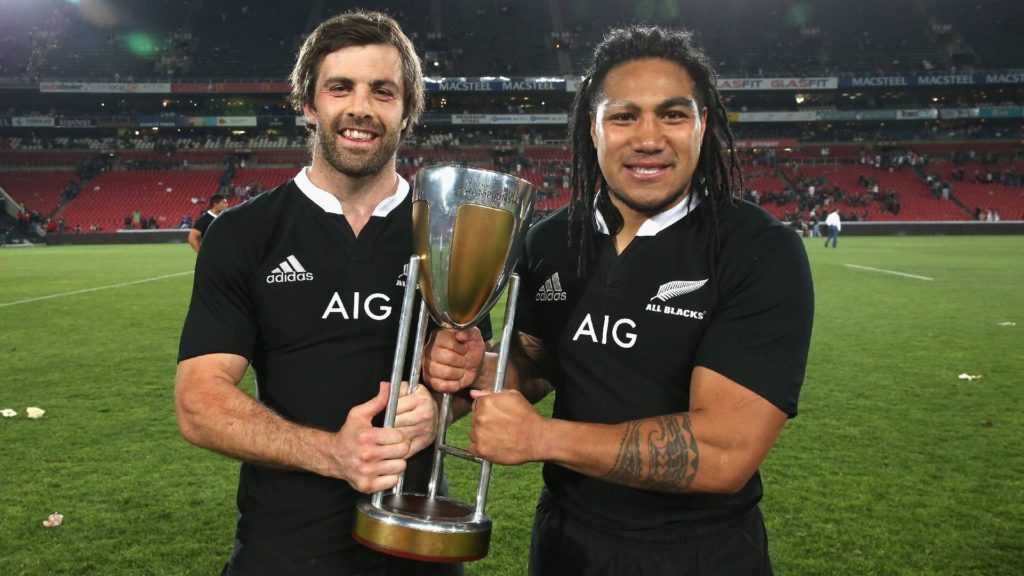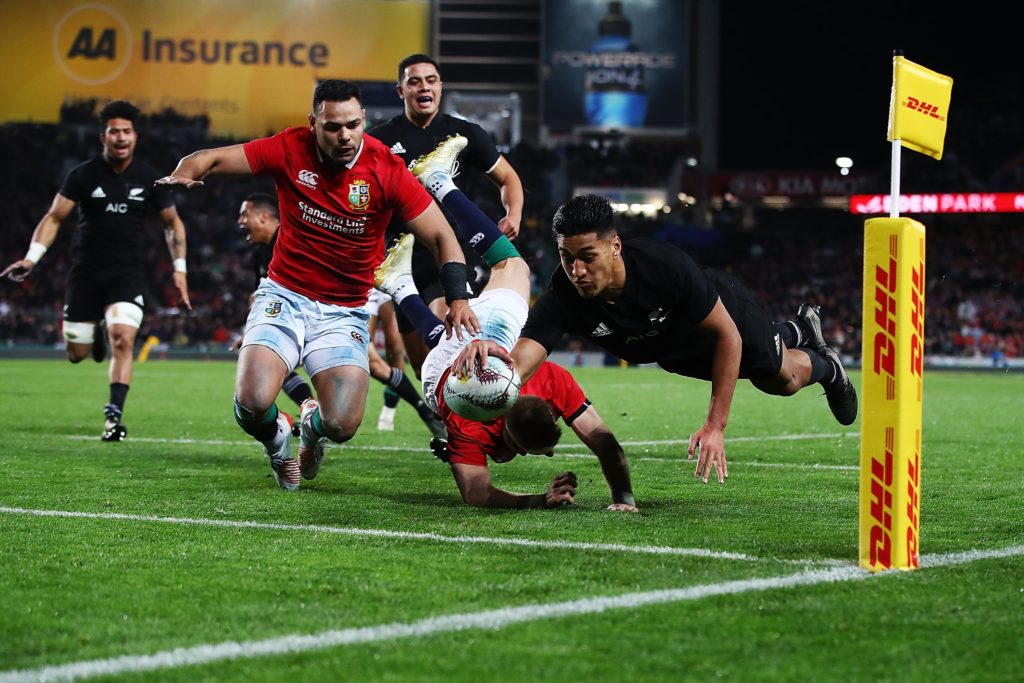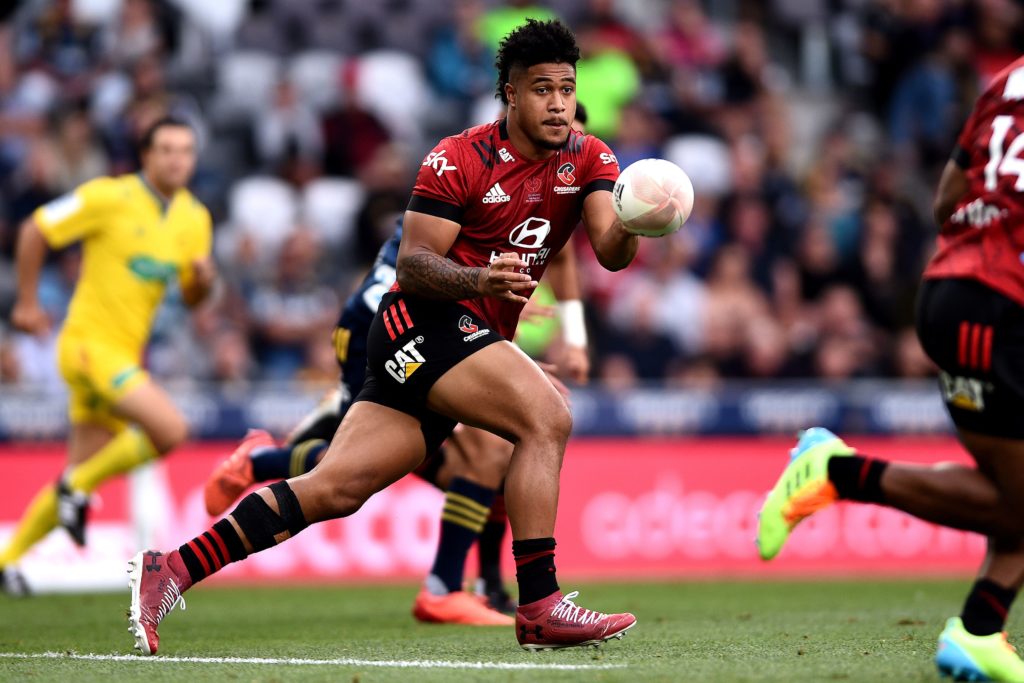The big question with the All Blacks is not so much who they want in their midfield this year, but what they want.
The established template of a thunderous hit-man at 12 playing with a ball-playing, organiser at 13 has lost its allure in recent seasons, partly because there hasn’t always been respective individuals to play those specific roles and partly because the obsession with rush defences has forced the All Blacks into a tactical re-think, where they now use their fullback as a second play-maker.
The All Blacks, being the All Blacks, evolved and adapted when their brilliant World Cup-winning side of 2015 broke up following the retirements of Richie McCaw, Dan Carter, Ma’a Nonu, Conrad Smith, Keven Mealamu and Tony Woodcock.
They pieced themselves back together, found new stars, changed some attacking shapes and continued to win at almost the same ridiculous rate they had.
But the one area they have never quite managed to get right since 2015 is their midfield. They haven’t found either the individuals nor the combination they want and nor, as a consequence, have they settled on a template that works best for the style of rugby they are hoping to play.

For eight years, the All Blacks knew what and who they wanted in their midfield. The selectors had a clear vision between 2008 and 2015 that what they were after was a bruising, gainline runner at 12 and a facilitator at 13.
There was a chicken and egg element to that because they had in Nonu one piece of that puzzle and in his Hurricanes team-mate Conrad Smith the other and no one really knows whether the players drove the strategy or the strategy brought the coaches to Nonu and Smith.
However it happened, the All Blacks had a simple but brilliant combination in Nonu and Smith and a defined template for how they wanted to operate.
But since those two retired from test football, the All Blacks have never had the same clarity around template or personnel and there has been a sense of uncertainty hanging over their midfield for the last few years.
None of the various combinations they have tried have convinced as the definitive answer and at the heart of the problem has been a failure to adapt to the changing defensive patterns the All Blacks typically face.
There’s risk but there’s also reward so I guess people are challenging you, when they do that, to have the skillsets to cope with limited amount of time and space.
Steve Hansen on the challenges of the rush defence
In 2018, after the All Blacks had failed to score a try in their 16-9 loss to Ireland – a week after they could only score one at Twickenham – then head coach Steve Hansen revealed where he felt the team was battling.
“It’s our poor decision making against teams that are coming on umbrella defence as opposed to the line speed,” he said.
“There’s risk but there’s also reward so I guess people are challenging you, when they do that, to have the skillsets to cope with limited amount of time and space.
“It’s about finding space and time to do what you want to do.”
Essentially, what he said was that most teams were pushing their openside wing hard and fast to the point where they would be blocking a direct pass between the All Blacks centre and openside wing.

That scenario created opportunity, he said, but only if the players were smart enough to take it and the coaches tactically capable of building various ploys to exploit it.
It remains debatable whether the All Blacks have yet consistently found the key to crack that particular code and as the 2021 international season creeps closer, midfield is the area which has the least certainty about possible selections and best combinations.
Last year’s truncated programme provided some clues as to how new coach Ian Foster wants to play things. He paired Jack Goodhue with Anton Lienert-Brown in four of the six tests, with Goodhue partnering Rieko Ioane in one and Ngani Laumape and Lienert-Brown starting in Brisbane.
Goodhue and Lienert-Brown had become the first choice partnership by 2019 – the last year of Steve Hansen’s eight-year stint as head coach so Foster, to a large extent, was building on what he inherited.
Except there was one major twist in his vision – which was he swapped their respective positions. Goodhue, who had been preferred at 13 by Hansen, switched to 12 where he was used more as a direct runner and crunch man.
Lienert-Brown swapped 12 for 13 and played in the wider berth on the basis Foster felt it would give him a touch more space to use his range of unorthodox skills to unpick defences.
The Goodhue-Lienert-Brown partnership enjoyed solid growth last year, but it never definitively screamed that it was the best option and with the former now unavailable for the remainder of the season after suffering a knee injury, the canvas is almost blank.
Not everyone agreed with the redeployment of Goodhue at second-five as at 101kg, he’s not in the same wrecking ball category as Nonu or Sonny Bill Williams.
In the art of getting over the gainline, Laumape is the better equipped but clearly Foster felt on balance Goodue brought more to the table. What the Crusaders’ midfielder gave away in sheer destruction he made up for with his refined and clever distribution and astute short kicking game.
The Goodhue-Lienert-Brown partnership enjoyed solid growth last year, but it never definitively screamed that it was the best option and with the former now unavailable for the remainder of the season after suffering a knee injury, the canvas is almost blank.
Foster can, effectively, begin 2021 with an open mind about his midfield and most probably will because none of the possible candidates currently look the total package and it may take a period of mixing and matching to stumble on the right combination.
It would be a stretch, for instance, to see Laumape as a like-for-like replacement for Goodhue. What first drew the All Blacks to Goodhue in 2018 was his distribution. Hansen famously noted that: “Jack is the best player in the country at exploiting a two-on-one.”
Laumape, for all that he has improved his passing and built some softer skills into his game, remains largely a one-dimensional player, reliant almost exclusively on his power and has yet to really convince that he’s got the variety of skills the All Blacks are looking for.

For the last four years he’s induced considerable excitement during Super Rugby, but hasn’t been able to deliver the same impact in test matches.
Some believe that the breakthrough could come this season, however he’s been linked with a move to Stade Francais next year – and if Paris is indeed on his radar, Laumape will hold limited appeal as a player in whom the national team should invest.
Ioane, the only other player to start a test in the midfield last year, continues to be almost impossible to appraise
As an attacking force, he’s almost without peer. Ioane is undoubtedly sharp, incredibly powerful and aware of where he can find space.
He is a strike running centre – something the All Blacks haven’t had for an age. Stick him in the No 13 shirt and defences will have to re-think how to contain the All Blacks. He’s also an improving ball player – capable of making good passes and clever decisions.
Foster will have to decide whether he’s willing to play the long-game with Ioane and give him an extended run at centre knowing he’ll make a few mistakes as he learns his craft or continue using him off the bench while occasionally starting him on the wing.
But there are two issues with Ioane that will be making Foster wary. The first is that his natural inclination is to run and back himself and perhaps, given that, Ioane is better suited to his more regular test berth on the wing. He still seems a better finisher than creator.
Secondly, his defensive positioning remains a work in progress as was evident in Wellington last year when the Wallabies so readily dragged him to the wrong places and exploited his inexperience in the role.
Foster will have to decide whether he’s willing to play the long-game with Ioane and give him an extended run at centre knowing he’ll make a few mistakes as he learns his craft or continue using him off the bench while occasionally starting him on the wing.
What will influence Foster’s thinking on that front is the growth and development of others. Peter Umaga-Jensen won a cap last year as a no-frills, straight-running centre and is a player who looks equipped to steadily grow the finer parts of his game.
He doesn’t offer the same explosive pace or attacking thrust as Ioane, but his steady as she goes approach where he makes his tackles and hits the line hard has an attractive quality to it.
The two wildcards in this midfield puzzle are Quinn Tupaea at the Chiefs and Leicester Fainga’anuku at the Crusaders.

Neither are ready to play test football on current evidence but both have the physical attributes to be of interest.
Tupaea arrived in the professional ranks in 2018 with expectation seemingly having weighed him down. He had captained the New Zealand Secondary Schools team and created plenty of chatter about his potential.
A shift back to his preferred No 12 role this year has finally enabled him to deliver something close to his best form and while he has obvious work to do on his distribution and decision-making, his line-breaking and defence are among the best in the competition.
“He came in as a young bloke with some pretty high expectations externally, and sometimes when you don’t live up to them immediately, that can create a little bit of undue pressure on you, and he may have been a victim of that last year,” revealed Chiefs coach Clayton McMillan a few weeks ago.
“But, amongst one or two other guys, he never has a bad day of training, that guy. For a young guy, he’s the ultimate professional. So he’s only going to get better and better, and he deserves the rewards that he’s getting over the last few games.”
Fainga’anuku is more at home on the wing but showed against the Hurricanes in Wellington that he can be a direct force playing in the midfield and has a surprisingly deft touch.
His ability to cover two positions is his selling point rather than being an out and out centre but he’s done enough to no doubt pique the interest of Foster. That interest will have deepened after Fainga’anuku was selected to start at centre against the Chiefs in Hamilton, with Crusaders coach Scott Robertson, saying: “He’s one that can play centre, a bit of Tana [Umaga] about him – he’s got that skillset where he can swap in and out and he’s got some really good guys around him, so David [Havili] looks after him and a couple of good wings will guide him around nicely. He’s a power 13 for us.”
In a sense there are options aplenty despite the season-ending injury to Goodhue. But none look or feel quite right or ready and it may take good luck rather than good management for Foster to stumble upon the right combination.



Comments
Join free and tell us what you really think!
Sign up for free